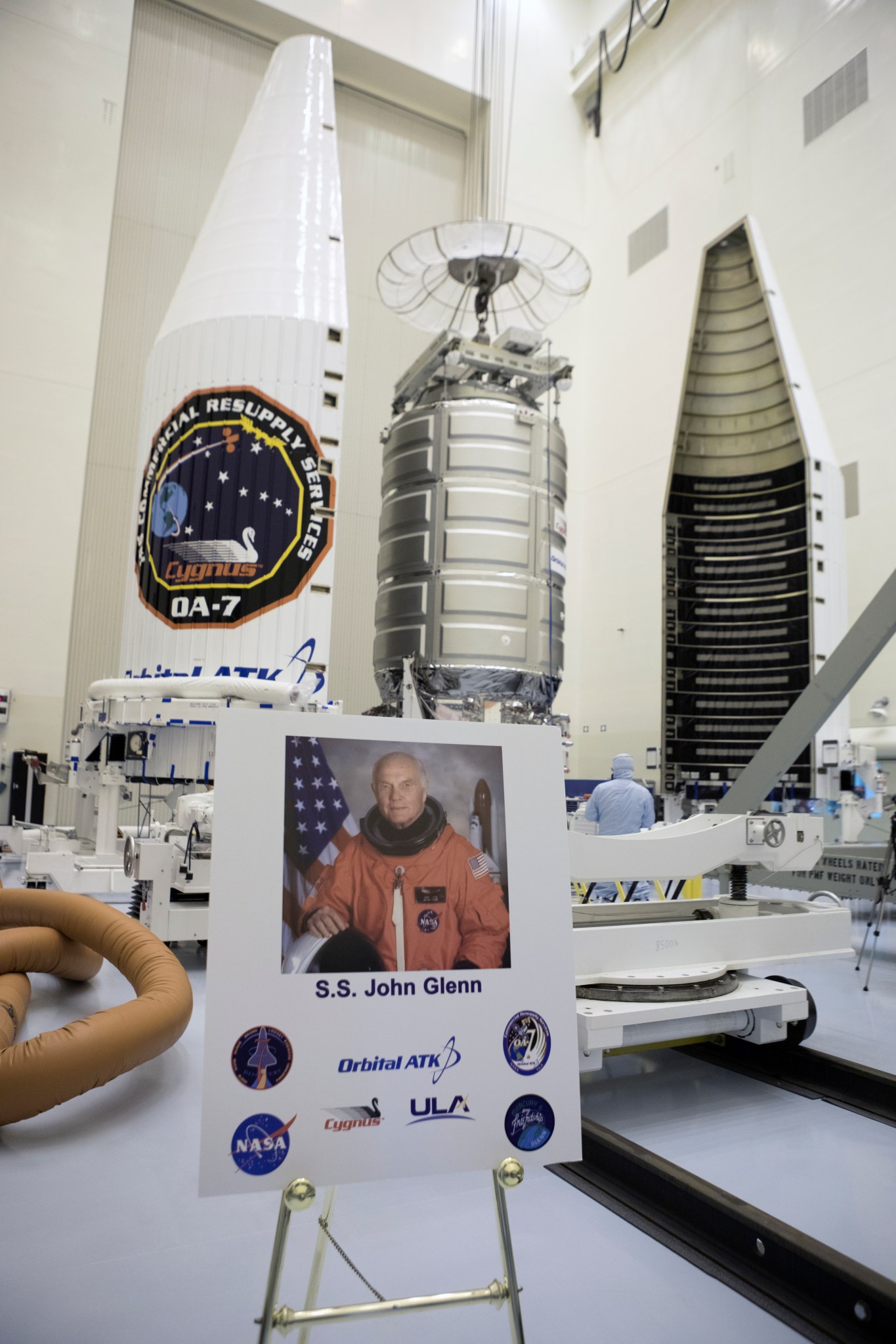A supply spacecraft set to carry thousands of pounds of experiments and equipment to the International Space Station will also carry the name John Glenn, Orbital ATK said Thursday during a ceremony dedicating the mission to the first American to orbit the Earth.
“John Glenn was probably responsible for more students studying math and science and being interested in space than anyone,” said former astronaut Brian Duffy, Orbital ATK’s vice president of Exploration Systems. “When he flew into space in 1962, there was not a child then who didn’t know his name. He’s the one that opened up space for all of us.”
Glenn, who passed away in December at age 95, was one of NASA’s original seven astronauts. After making his landmark orbital mission in February 1962, he served as a U.S. senator from Ohio. After retiring from politics, Glenn made his second spaceflight in 1998 as part of the STS-95 crew flying space shuttle Discovery.
The spacecraft will carry 7,600 pounds of cargo to the station and will be lifted into space atop a United Launch Alliance Atlas V rocket.
“We’re building the bridge to history with these missions,” said Vernon Thorp, ULA’s program manager for Commercial Missions. “Every mission is fantastic and every mission is unique. At the end of the day every one of these missions is critical.”
Lifting off from Space Launch Complex 41 on March 19 at 10:56 p.m. EDT, the rocket will place the spacecraft on a precise path to reach the space station about four days later. Cygnus, operated by the Orbital ATK mission team, will approach close enough for the station’s 55-foot-long robotic arm to grapple the supply craft and connect it to one of the ports on the orbiting laboratory.
The spacecraft, powered by its own set of solar arrays, will remain connected to the station until June. During that time, astronauts will unload the Cygnus, including research dedicated to range of fields such as astronomy, biology, crystal growth and technology development. The spacecraft also will carry an advanced plant habitat for growing vegetables in orbit.
“We have more than 2,000 pounds of scientific experiments on board spanning all fields of science onboard,” said Holly Vavrin, a commercial visiting vehicle engineer in NASA’s International Space Station Program Office. “There are also 38 CubeSats launching on this mission, including four that will launch from the Cygnus and 34 that will be launched from the station to conduct a range of experiments including testing long-life battery systems, study cloud systems and measure background radiation.”
Later, astronauts will pack it with trash, unneeded equipment and spent experiments. After detaching from the station, a final experiment will be conducted to test how fire burns in space before Cygnus plunges into the atmosphere and burns up over the Pacific Ocean.
This will be the third Cygnus spacecraft to ride an Atlas V into orbit from Kennedy, and is Orbital ATK’s seventh commercial resupply services mission to the space station. It will also mark NASA’s second supply mission of the year to the station following last month’s launch of a SpaceX Dragon capsule.
“All these teams have worked extremely hard to get this mission to this point and we are looking forward to a great launch,” said Frank DeMauro, vice president and general manager of Orbital ATK’s Advanced Programs division.
Glenn’s work on behalf of NASA and as a strong supporter of spaceflight has been noted as inspiration to astronauts and space industry engineers and workers. Orbital ATK traditionally names its Cygnus spacecraft for late astronauts.
“He has paved the way for so many people to follow in his footsteps,” DeMauro said. “It is my humble duty and our great honor to name this spacecraft the S.S. John Glenn.”
Steven Siceloff
NASA’s Kennedy Space Center



























